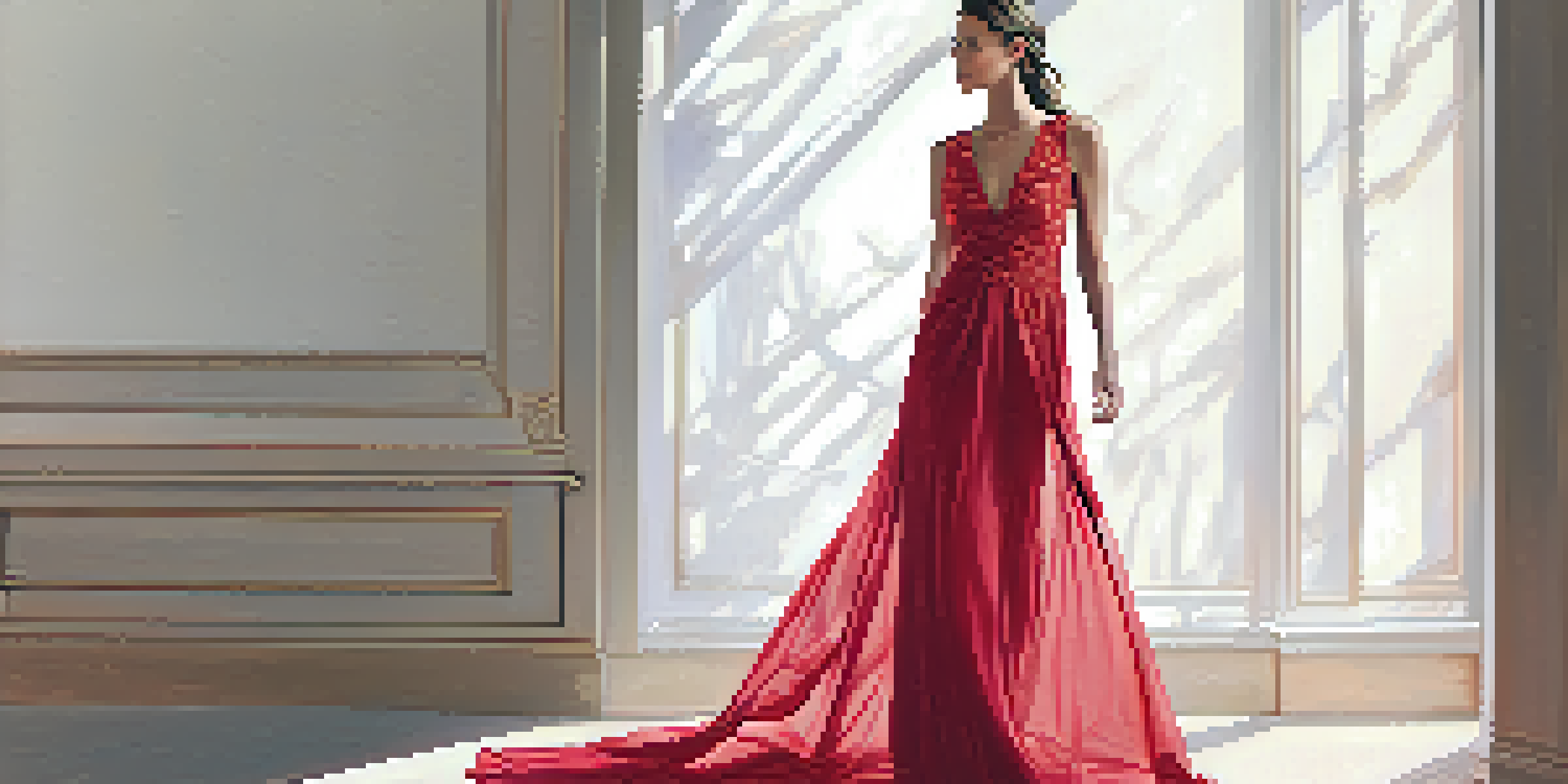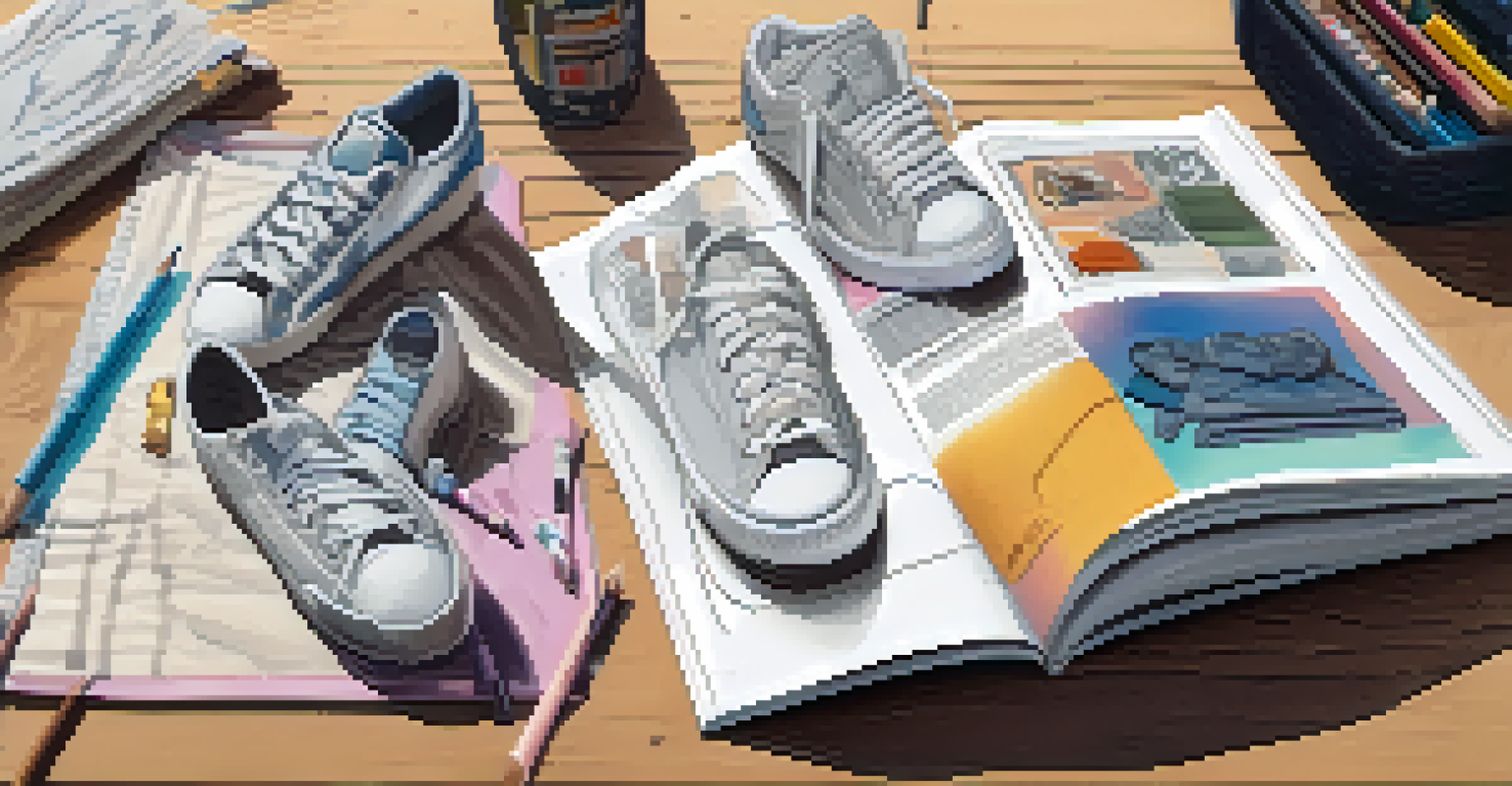Key Techniques in Fashion Illustration for Beginners

Understanding the Basics of Fashion Illustration
Fashion illustration is an art form that combines creativity and technical skill. At its core, it captures the essence of clothing and style through imagery. Beginners should start by becoming familiar with the fundamental concepts, such as proportions and poses, to lay a strong foundation.
Fashion is the armor to survive the reality of everyday life.
It's essential to know that fashion illustrations often exaggerate features to emphasize the design. For instance, elongated limbs can highlight a dress’s flow. This stylization is not just artistic but serves to draw attention to the clothing itself.
By practicing basic shapes and forms, you can develop a better understanding of how to represent clothing realistically while maintaining that artistic flair. Remember, every great illustrator started with the basics!
Mastering Proportions in Your Illustrations
Proportions are crucial in fashion illustration, as they dictate the overall look and feel of your artwork. A typical fashion figure is often represented with a ratio of 8 heads tall, creating a sense of elegance and style. Understanding this ratio can help you create more visually appealing figures.

To practice, sketch simple lines for the head, torso, and limbs, ensuring they align with the 8-head rule. This exercise can significantly improve your representation of the human form. Remember, the aim is to create a balance that complements the clothing.
Master Proportions for Elegance
Understanding and practicing the 8-head ratio is key to creating visually appealing fashion figures.
As you become more comfortable with proportions, don't hesitate to experiment. Sometimes, breaking the rules can lead to unique styles that reflect your artistic voice. Just be mindful of your audience and the message you wish to convey.
Exploring Different Styles of Fashion Illustration
Fashion illustration is a diverse field with various styles, from realistic portrayals to abstract interpretations. Experimenting with different styles can help you discover what resonates with you the most. For example, you might admire the clean lines of minimalist designs or the vibrancy of editorial illustrations.
Every artist dips his brush in his own soul, and paints his own nature into his pictures.
A good exercise is to replicate various styles from established fashion illustrators. This practice can provide insights into techniques and approaches that you can adapt or incorporate into your work. It’s also a great way to expand your skill set.
Ultimately, your style will evolve as you gain experience and confidence. Embrace the journey of finding your unique voice within the vast spectrum of fashion illustration.
Choosing the Right Tools for Fashion Illustration
Selecting the right tools can enhance your fashion illustration experience. Pencils, markers, watercolors, and digital software each offer unique advantages. Beginners often start with basic sketching tools like pencils and fine liners before exploring color mediums.
For instance, markers can provide vibrant colors that make your illustrations pop, while watercolors lend a soft, ethereal quality. If you’re leaning towards digital illustration, software like Adobe Illustrator or Procreate opens up a world of possibilities.
Explore Various Illustration Styles
Experimenting with different styles helps you discover your unique artistic voice in fashion illustration.
Don’t be afraid to experiment with different tools! Each medium can bring out different aspects of your style and creativity. Over time, you'll find what works best for you and your artistic vision.
Incorporating Textures and Patterns into Your Work
Textures and patterns play a significant role in fashion illustration, adding depth and interest to your designs. They can mimic the look of fabrics, such as silk or denim, and make your illustrations more lifelike. Start by studying various materials and how they interact with light and shadow.
A fun way to practice is to create swatches of different textures and patterns. By incorporating these into your sketches, you can experiment with how they change the overall feel of your illustration. This practice will refine your ability to depict fabric visually.
As you grow more confident, try to integrate these elements into your character designs. Using textures and patterns creatively can elevate your work, making it stand out in the competitive world of fashion.
Developing Your Unique Fashion Illustration Style
As you gain experience, developing your unique style becomes essential. Your illustrations should be a reflection of your personality and artistic vision. Start by analyzing your favorite artists and identifying what elements you admire in their work.
You might be drawn to specific color palettes, line work, or character poses. Incorporate these elements into your sketches while adding your twist. This blending can help forge your distinct style that resonates with others.
Build a Strong Illustration Portfolio
A well-curated portfolio showcasing your best work is essential for attracting potential clients and opportunities.
Remember, your style will naturally evolve as you grow as an artist. Embrace the changes and allow your creativity to shine through your illustrations.
Building a Portfolio to Showcase Your Work
A well-curated portfolio is crucial for showcasing your fashion illustrations. Start by selecting your best pieces that represent your style and skills. Aim for a mix of different techniques and styles to display your versatility.
You might consider organizing your portfolio by themes, such as editorial work, character design, or personal projects. This approach makes it easier for potential clients or employers to navigate your work and see your range.

In today's digital age, an online portfolio is essential. Platforms like Behance or your website can help you reach a broader audience. Don't forget to update your portfolio regularly as you create new work and refine your skills.
Practicing Regularly to Improve Your Skills
One of the most effective ways to improve your fashion illustration skills is through consistent practice. Set aside time each week to sketch, experiment with new techniques, or refine your style. The more you draw, the more you’ll develop your eye for detail and proportion.
Joining a community or online group can also provide motivation and inspiration. Sharing your work and receiving feedback can be invaluable for growth. Consider participating in challenges or prompts to keep your practice fresh and exciting.
Lastly, don't be discouraged by mistakes. Each error is an opportunity to learn and grow. Embrace the journey of becoming a skilled fashion illustrator—every stroke you make brings you one step closer to your goals.